Review: Apple iPhone 7 and iPhone 7 Plus
 Thursday, September 22, 2016 at 4:24PM
Thursday, September 22, 2016 at 4:24PM 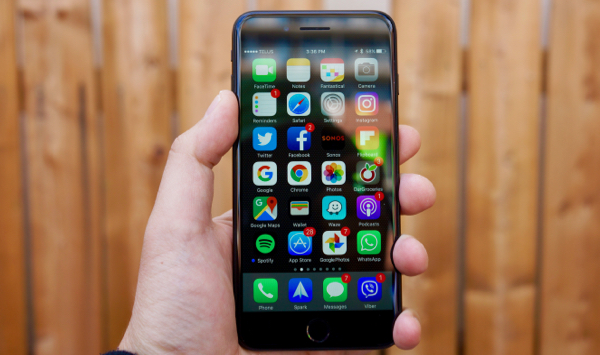 Text and photos By Gadjo Cardenas Sevilla
Text and photos By Gadjo Cardenas Sevilla
iPhone 7 may not have been the huge overhaul many expected but it is a solid and worthy upgrade that will fundamentally change where and how iPhones are used. New camera capabilities are transformative and show innovation in imaging on smartphones is leapfrogging the camera industry.
Apple’s new iPhone 7 and iPhone 7 Plus may, on the surface, look like mere updates to the iPhone 6 and iPhone 6S designs of the past two years.
While this is a fair observation that brings to question Apple’s desire or ability to evolve on past designs, there are a lot of features and functions that are brand new to the iPhone line that aim to keep it at the forefront of the smartphone industry it has helped create.
“We have created a product that is the most deliberate evolution of our founding design,” says Apple’s Chief Design Officer Jony Ive at the start of the video explaining the iPhone 7’s design and construction. The company understands this is an evolutionary chapter in the iPhone’s history, but it doesn’t make it any less significant.
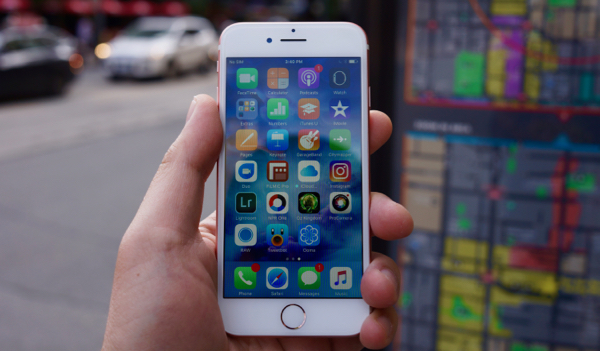
While Apple’s changed up the look and feel of the iPhone every other year, the iPhone 7 sticks out as an anomaly because it so closely resembles its predecessors save for some minor changes and two new finishes. But, considering that next year is the iPhone’s 10th year anniversary and there are very high expectations that Apple will once more ‘reinvent the iPhone,’ in a completely dramatic fashion, 2016's iPhone 7 does represent an interesting bookmark in between two eras.
What’s new in iPhone 7
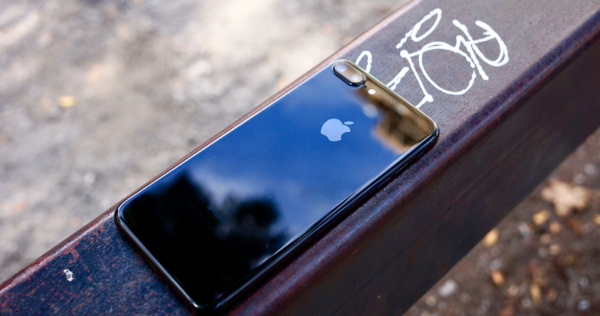
This is not to take anything away from the iPhone 7, which brings more than a handful of new features and capabilities to set it apart from the iPhone 6S as well as the rest of the smartphone market.
The first important change is the addition of water resistance with no less than an IP67 rating. This means new iPhones can resist water for 30 minutes maximum and if submerged within a depth of 1 meter only.
So, while you can’t scuba dive or go swimming with your iPhone (like really, who does that?), it will survive getting rained on, soda or wine spills and even unintended falls into bathtubs, toilets, and even swimming pools.
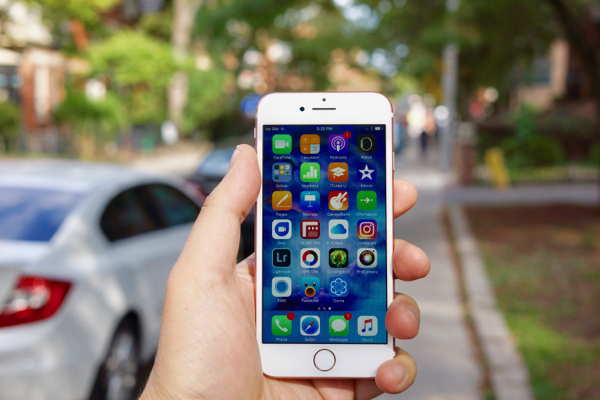
Water resistance removes one of the biggest pain points of owning a thousand dollar smartphone, that it only takes a three-second dip in a toilet to turn it into a Rose Gold coaster. Sure, Apple isn’t the first to market with water resistance, but judging from various tests I’ve seen online, they waited until they got it right.
The construction of the iPhone 7 is even more cohesive than in the past. You can run the iPhone 7 on your cheek near your beard or on your hair and it will not catch hair in the almost invisible seams. It’s a strange test, I know, but older iPhones still managed to trap follicles. It speaks the high level of integration.
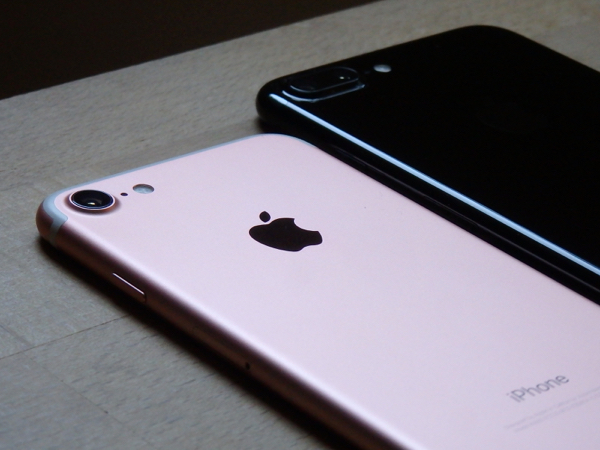
The antenna lines, which stood out in the past few versions, are now pushed to the edges and barely visible, specially in the black variants. The result is a cleaner overall execution. Camera bumps are still visible but given the bump-up in camera capabilities, are somewhat merited.
The new Jet Black variant, which, together with the Ceramic Apple Watch, represents Apple’s mastery of materials. This variant is so glossy that it looks like the glass and the case are one piece. This extends to the tactile feel of that super-shiny exterior which almost feels like glass. The iPhone feels luxurious, it also looks imposing and more elegant in Black and Jet Black.
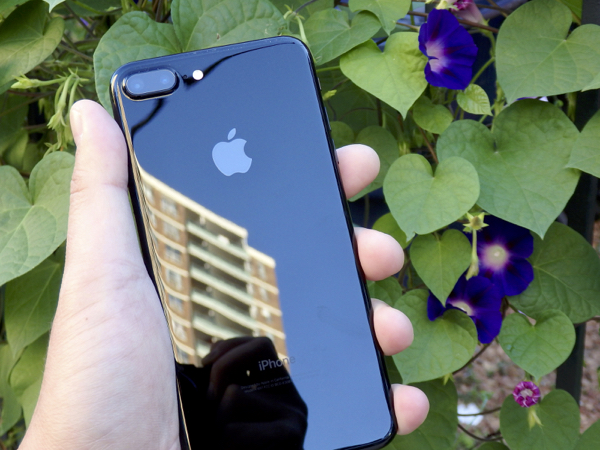
Apple’s also made the Home button that houses the Touch ID feature solid state. What used to be a physical button is now just a dimple in the front fascia. Instead of the once-familiar click, you now feel the whole phone vibrate thanks to a gen-2 Taptic Engine which has become one of the more exciting although underrated features of this revision.
The downside is that the button will no longer work if you are wearing gloves or in any instance where Touch ID can’t sense your finger. Capacitive gloves should work with the new Home button.
The Taptic feature is a huge update for me. The vibrations and palpable clicks vary widely and come into play when selecting menu items, interacting with 3D Touch enabled apps and when playing games. The iPhone 7 comes alive thanks to the Taptic Engine specially in games like "OZ: Broken Kingdom”.
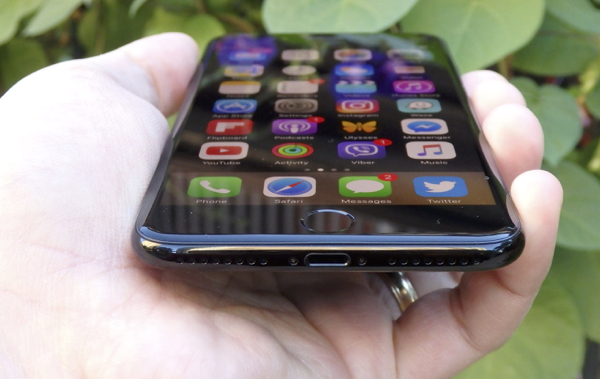
The iPhone 7 and iPhone 7 Plus now finally have stereo speakers which are also much louder than in previous models. This helps in managing hands-free calls, listening to music or podcasts in enclosed spaces as well as listening to turn-by-turn directions from your favourite navigation app.
While the displays of the iPhone 7 and 7 Plus look identical to last year's models, they are actually brighter plus have a wider colour gamut, this means colour accuracy is more like real life. Working in tandem with the new camera sensors, you can shoot subjects like flowers or birds and get reproductions of colours and details that are more realistic and accurate.
A leap in camera technology
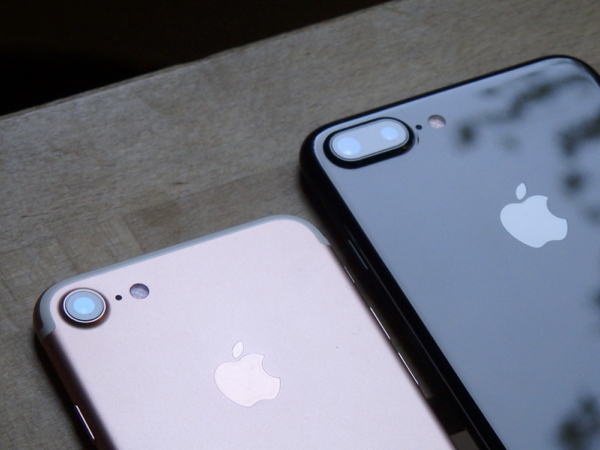
Apple has bolstered the favourite and likely most used feature of the iPhone, the cameras. iPhone 7 now has a 12 megapixel camera with optical image stabilization for photos and for video.
Even better, Apple’s endowed the iPhone 7 with a wider f/1.8 aperture lens for better depth of field as well as improved clarity in various shooting conditions, particularly for portraits since it lets in 50% more light.
The new six element lens ensures sharper images and the high-speed camera sensor is 60 per cent faster in focusing and picture to picture performance plus it is 30 per cent more energy efficient.
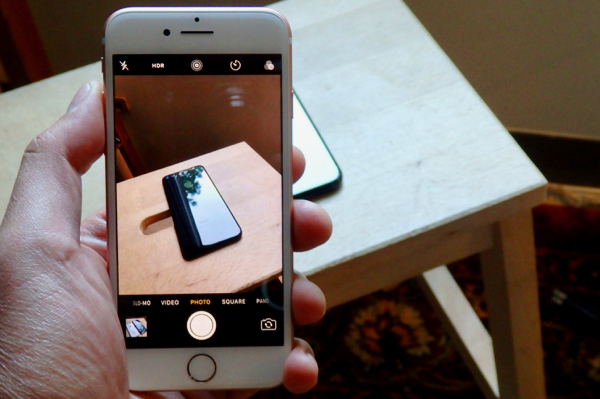
The iPhone 7 Plus has two 12 megapixel cameras, a wide-angle and a 'telephoto' which can be used to take both standard and 2x photos and videos without sacrificing image quality. This is by no means a traditional telescoping telephoto lens, but works the same way thanks in part to some software wizardry on Apple's part
A software update is coming that will enable the portrait feature, which uses both cameras to gather information an create a forced depth of field or ‘bokeh’ effect which offers high focus in the foreground object while blurring the background. I've been waiting to install the beta with this feature to add information to this review.
 With iOS 10.1 beta the new Portrait setting creates a depth of field effect for bokeh
With iOS 10.1 beta the new Portrait setting creates a depth of field effect for bokeh
Bokeh is used loosely here, it is an effect that was only possible using larger sensors and expensive lenses and if Apple pulls it off as they have described, it could be a game changer for portrait photography. The early results I've seen online are hopeful although mixed. It is possible to get great portraits with the beta but with some tradeoffs in quality and accuracy.
The front-facing 7 megapixel Facetime camera gets some love as well. This front-facing shooter is now capable of shooting 1080p HD video (great for Snapchat, Persicope and other video sharing apps). I found it made better selfies.
Low light photography is great but is even more impressive when you use the iPhone 7 for HD video recording. Thanks to the wider lens and the optical image stabilization (plus whatever hyper computing that A10 Fusion processor is doing), you can quite easily get cinematic and stable video even if you’re shooting handheld.
More than a super-smart camera in your pocket, the iPhone 7 is like having a movie camera in your pocket. Use the Filmic Pro app, get an external mic and a dolly and you can now shoot legit video that required a big honkin’ setup just four years ago. With some care, it is now possible to shoot truly cinematic video that's broadcast grade or ideal for short films with the iPhone that is in your pocket.
 Shot on iPhone 7 and made Black and White using Lightroom Mobile
Shot on iPhone 7 and made Black and White using Lightroom Mobile
Using the iPhone 7 for stills is just as remarkable. Apple has found a way to make an already accomplished shooter even better and now you can shoot RAW with third party apps. To see what the iPhones 7 can do in the hands of a professional photographer, please check out Austin Mann’s inspiring shoot in Rwanda where he only used both models of iPhone 7.
The substantial update in camera capability puts the iPhone 7 at the level of more serious cameraphones like the LG G4 and the Microsoft Lumia 950 which also have RAW capture capabilities.
I usually carry one or both of those aforementioned cameras as a backup to my Sony NEX or Olympus interchangeable lens cameras, the black iPhone 7 I ordered will likely become my main smartphone and my backup camera if it proves to be as capable.
7 Plus Positive
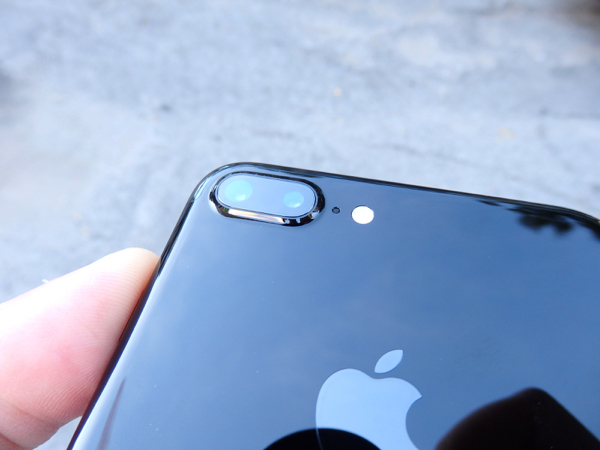
The iPhone 7 Plus and its dual-camera combination deserves special mention as a notable leap forward in the camera department. I long believed that Apple would be a good candidate to get into the camera space and always thought that they would design a great standalone camera.
Through the years, the company has placed some serious muscle behind making the iPhone's camera a best of breed product that may have been a convenient feature at first but is arguably the most important feature for many users.
The iPhone 7 Plus is a viable replacement for a 4K video camcorder and it is a great standalone camera provided you understand its abilities and its limitations.
The larger storage capacities and improved optics, sensor and lenses on the new iPhones (not to mention the excellent software and availability of various apps) actually place the iPhone 7 Plus ahead of many premium standalone cameras for general shooting conditions.
Magnificent 7
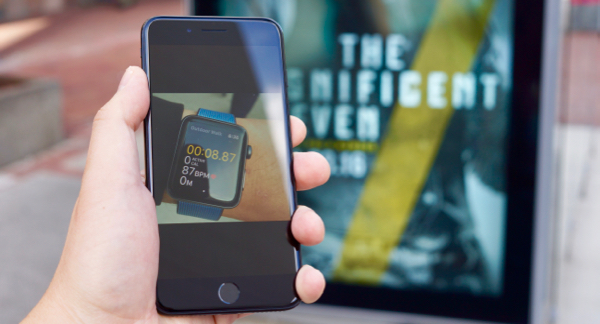
The iPhone 7 boasts the most powerful SoC (System on a Chip) from Apple in the A10 Fusion chip. This is a beast of a processor which is 120 times faster than what the original iPhone had. A quad-core processor, the A10 Fusion has two cores for performance and two cores for efficiency and can deftly switch as needed and on the fly.
The graphics performance is 50 per cent better than the iPhone 6S thanks to a 6-core processor that Apple claims offers console-class processing, this should make playing graphic intesive games smoother and more enjoyable. The big revelation for me is that while the iPhone 7s have an abundance of processing power, they’re also quite efficient and add a few hours of use on a full charge.
I am a bit worried that the iPhone 7 seems to generate a bit more heat than I am used to (mostly during charging and navigation). I haven't heard any buzzing or hissing as reported by some outlets, but it remains to be seen if the processor is pushing harder than in the past.
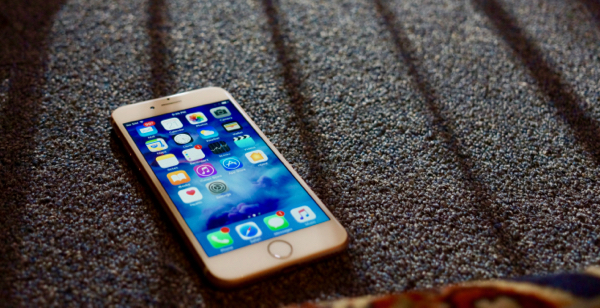
Side by side speed comparisons between the iPhone 7 Plus and a flagship Android device with the latest Snapdragon 820 processor and 4GB of RAM saw the iPhone render complex websites and multitask far more efficiently.
This type of result isn’t new, iPhones manage to out perform many competing flagship devices because of the tight hardware/OS integration and better memory management.
The A10 Fusion chip is a true marvel and an indicator that we’re not too far away from having Apple silicon running on MacBooks and iMacs. Having their own processor on desktop-class devices, might be the missing piece of the puzzle for a move to Apple processors on the desktop.
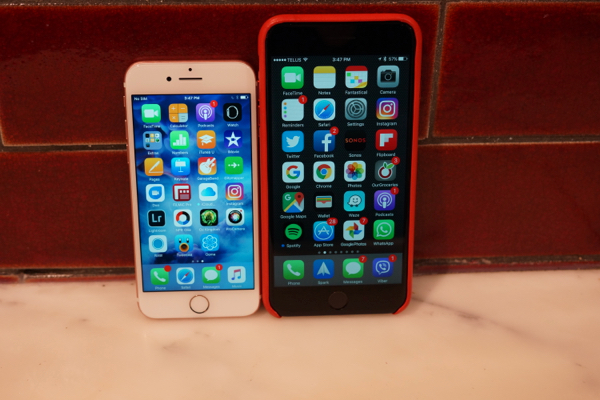
What this means for the iPhone 7 and iPhone 7 Plus is that they can offer performance on demand while calibrating between the four processor cores for efficiency. Apple seems to have solved fundamental problem that Intel hasn't been able to crack. I’ve noticed battery life that’s as good as the iPhone 6S, perhaps better. I’ll update my findings soon.
Three options for one missing headphone jack
The removal of the headphone jack on the iPhones 7 is one of the most polarizing aspects of this release. One camp is incensed that Apple would dare remove such a comfortable and ubiquitous I/O standard. The other doesn’t think it’s a big deal since going wireless is the way of innovation.
I admit i’m torn about this aspect of the iPhone 7 since I do plug in in my phones to external speakers, various hi-fi over the ear and in-ear headphones as well as the line-in or AUX jack in my old car.
On the other hand, I quite like the design symmetry of the iPhones 7 without the headphone jack and think Apple did a good job by offering not one but three possible options for getting over the headphone jack.
The first, and most obvious, are the included Lightning EarPods which are a plug and play affair and sound decent. I’m not a huge fan of the fit of the EarPods so the second option, the Lightning Headphone Adapter, is the one most people will go for. This works quite well with most headphones and even enables the volume up/down and play/pause controls on most third party headphones. After a few days with the Adapter, I forgot about the lack of the headphone jack until I needed to charge the iPhone and listen to music or podcasts.
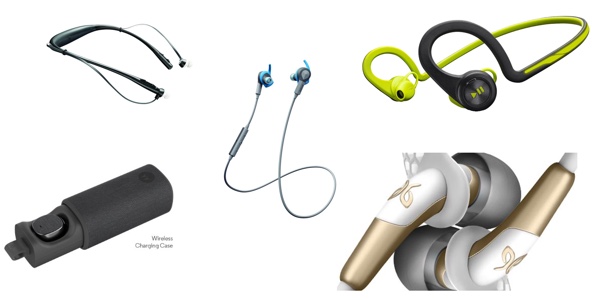
The third option are the still unavailable AirPods. I tried these for a few minutes during a briefing so have limited feedback. They seemed to fit well, sound was acceptable, and the pairing as well as connectivity between the two pods (remove one, music is paused) seems to work well. I wasn't too thrilled with the design or the way the antenna stick out of your ear, while I understand that's where the mics need to go, the look seems kind of goofy to me. I've written a roundup of older, although currently available, bluetooth options to Apple's AirPods.
The AirPods have Apple’s new W1 processor which make them more advanced. The same chip is coming to Beats Solo3, Powerbeats3, BeatsX headphones which offer the same seamless connectivity plus advanced battery life.
I use a pair of Jabra Coach Bluetooth headphones in the gym and they work great with iPhone 7 and figure that various Bluetooth headphones should work with mixed results.
Conclusion
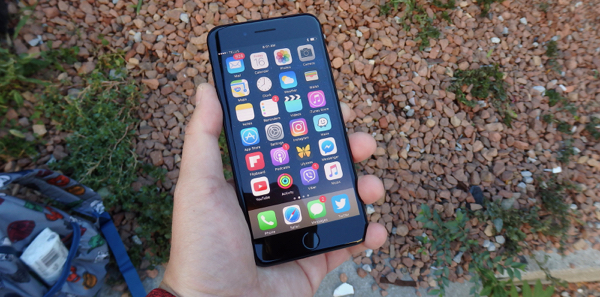
The iPhone 7 receives a number of notable upgrades in the area of processing power, still and video camera capability, new stereo speakers and water resistance, plus improved battery life which makes it a great update to the iPhone 6S which it so strongly resembles.
The iPhone 7 does away with a physical home button in favour of a Taptic-enabled Touch ID. More importantly, it has relegated the “single-use and analog” headphone jack to obsolescence by removing it completely and thus forcing users to either use the included Lightning EarPods, a Lightning Adapter or pony up some money for the all-wireless AirPods or third-party bluetooth headphones.
Hardly has innovation come at such a high price, and even with a trifecta of solutions to the headphone jack (or lack thereof) problem, some users will be smarting at Apple’s decision to retire a component that’s still very much in use today. In my experience, it's not that big an issue to overcome, as long as you keep an open mind.
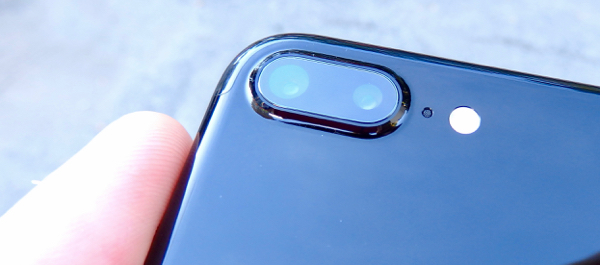
iPhone 4S, 5 and 5S users have a great new iPhone to consider trading up for. The sheer power of the new processor, the larger storage capacities and the stellar cameras are great reasons to get behind this new iteration. Water resistance and stereo speakers are long awaited upgrades.
iPhone 6 and iPhone 6S users will be hard pressed to upgrade and will likely wait it out for next year’s offering specially since iOS 10 brings various updates to their older devices. The two new black variants plus the improvements in camera quality and water resistance do make this offering a tempting upgrade for iPhone aficionados and switchers moving from other devices.
Hits:
- Jet Black and Black variants are the sexiest looks the iPhone has ever had
- Camera performance is seriously approaching advanced point-and-shoot territory
- 2X Zoom on the iPhone 7 Plus is a legit feature and works in video a well as stills
- The A10 Fusion processor is the most powerful one yet and beats the 12.9-inch iPad Pro in performance benchmarks
- Taptic Engine 2 opens up a lot of possibilities for games and apps
- Lightning EarPods and Lightning Adapter come free in the box
- Optical Image Stabilization in both models for photos and video
Misses:
- Same old overall look and feel as iPhone 6 and iPhone 6S is familiar but unexciting
- The lack of a headphone jack will be a contentious issue and possible deal breaker for some users
- No move towards the more universal USB Type-C standard in this version
- Old iPhone 6S cases no longer work because of the new camera bumps
The Verdict:
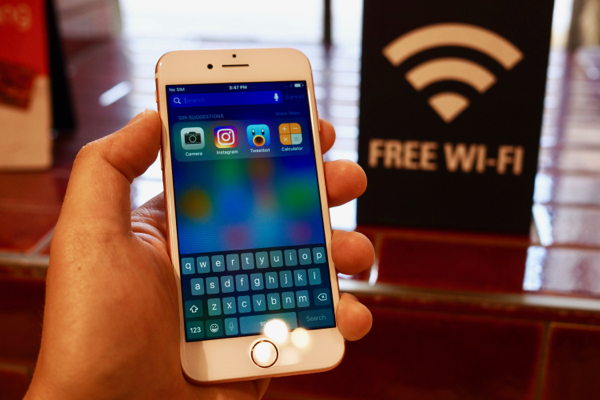
The iPhone 7 is a safe and welcome update to the iPhone and iPhone Plus design that has become somewhat iconic and accepted. Apple’s put a lot of focus on the camera, adding water resistance and stereo speakers as well as improving the haptic feedback and increasing the battery at the expense of the headphone jack.
Users will get used to living without a headphone jack, the included dongle may be inconvenient but it works and it is affordable to replace. The jury is still out on whether the AirPods will gain traction, they are a first-gen product priced at a premium after all.
iPhone 7 may not have been the huge overhaul many expected but it is a solid and worthy upgrade that will fundamentally change where and how iPhones are used. New camera capabilities are transformative and show innovation in imaging on smartphones is leapfrogging the camera industry.
iPhone 7 and iPhone 7 Plus are two of the most powerful and capable smartphones in the market right now and with water resistance and improved camera technology, far more versatile than previous versions.
Rating: 4.5 out of 5




















Reader Comments